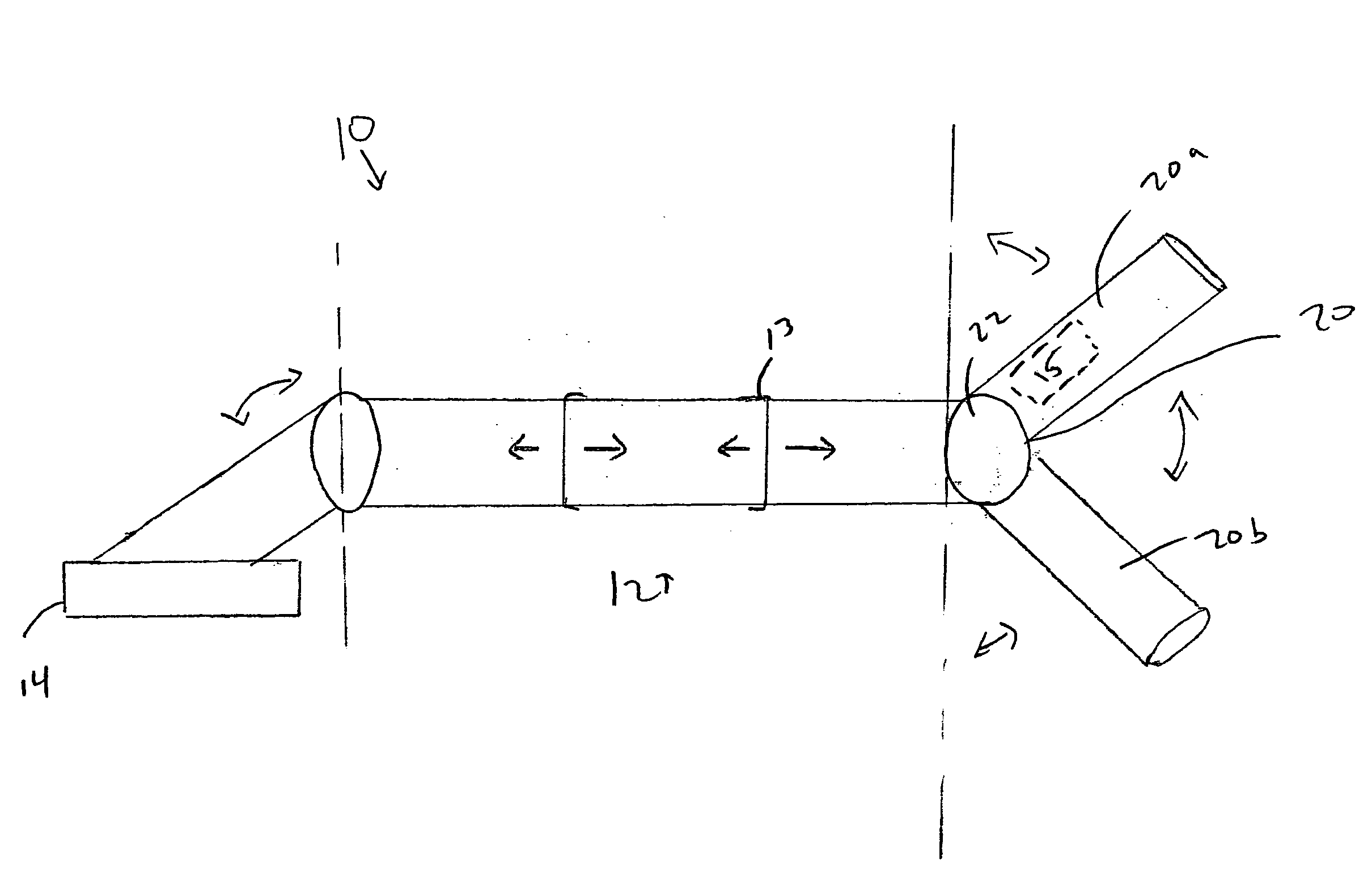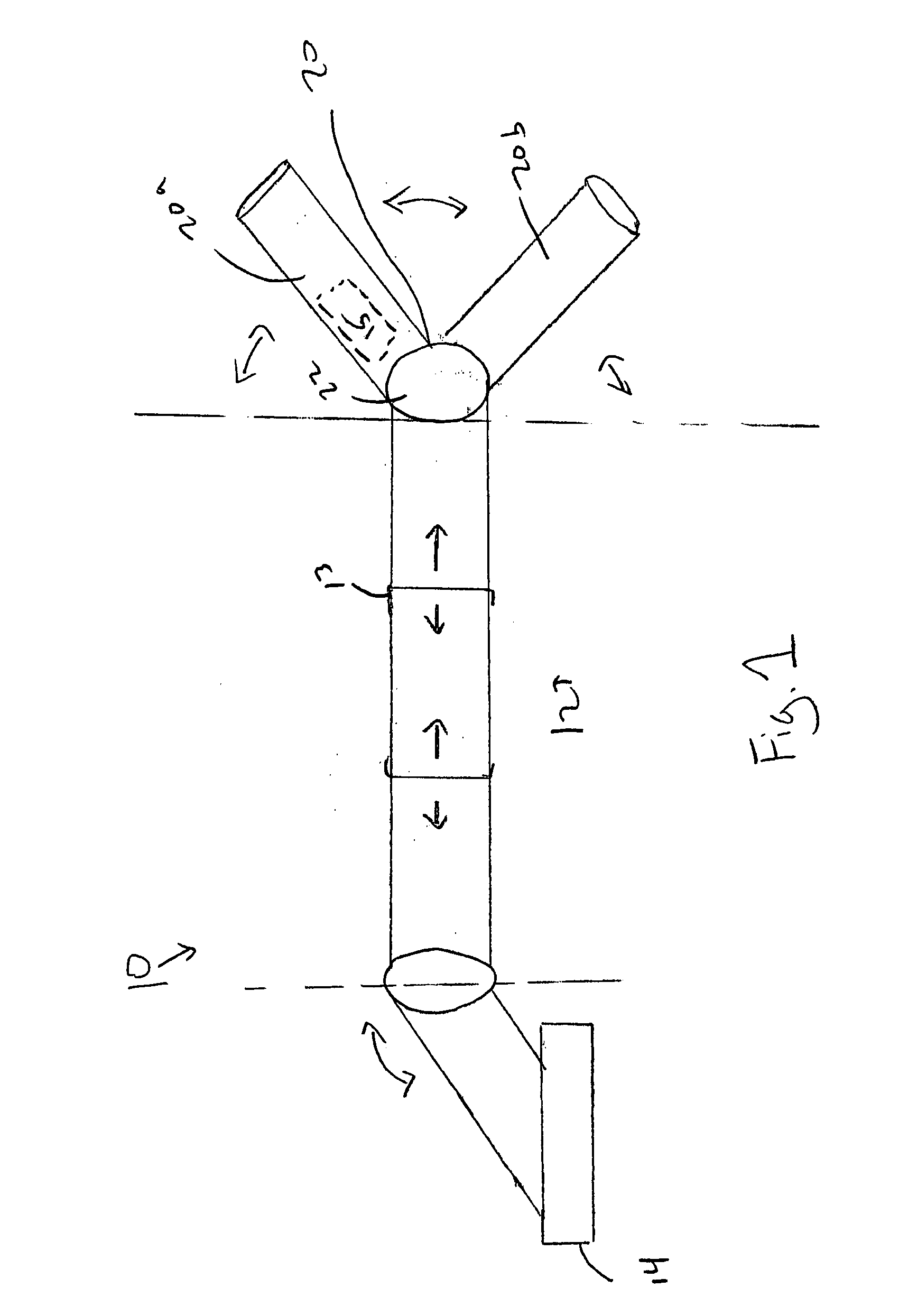Non-shaving methods of hair removal such as
laser treatment,
wax-based hair removal, and
electrolysis treatment are available, but are costly and are not private to the individual, requiring the involvement of a service group and provider.
In addition, the time necessary for scheduling, attending and performing such procedures is often considerable, making them unacceptable for many individuals.
The above factors greatly reduce the utility of such procedures for many men.
Removal of hair on the back with traditional commercial razors for face or leg shaving is not possible to do without the assistance of another person, since such razors do not allow access to a major portion of the back by the individual, and require another person to assist in shaving the individual's back, making such devices unsuitable for many people who do not want to involve another person in this process.
Therefore, traditional face shaving razor devices do not provide a solution for removing
unwanted hair on the back for individuals desiring to complete this task in private.
The requirement of lathering one's back prior to shaving it is clearly suboptimal and would require a separate device, or another individual's assistance, for this to be accomplished effectively for most areas of the back, limiting the utility of such conventional
consumer razors and other shaving devices that teach or suggest the use of lather application to the
skin area prior to shaving the back.
In addition, such conventional face razors and, therefore, any devices that contemplate employing them for back shaving, are intended to function properly when
cutting shorter hairs requiring careful short stokes with reasonable amounts of pressure to the
skin, and do not function as effectively on longer dense hairs, such as those that are often found on the back.
Use of such conventional razors on long hairs of the back or chest, for example, is not very easy because the length of the hair interferes with the function of the razor, resulting in a need for even greater pressure against the
skin and higher number of razor strokes in an area to be shaved.
The use of greater than normal pressure and greater number of shaving strokes increases the risk of
irritation and cuts, which are already common in face shaving with such devices.
However, unlike the face, the skin of the back is not very easily routinely cared for, so repeated accidental
irritation and cuts on the back are likely to lead to more significant problems such as bleeding and infection.
Infection of the skin, such as
folliculitis and
cellulitis can be serious conditions, particularly if they occur in areas of the body that are difficult to routinely monitor, clean and treat by applying an
antiseptic medication.
Therefore, even a
normal rate of bleeding and
cutting of the skin of the back as experienced with face shaving razors and associated devices would be problematic on the skin of the back, and as described above, use of conventional shaving razors on the back would require techniques that could substantially increase this risk.
Therefore, it is not to be recommended that large number of individuals shave their backs unassisted using devices that comprise or employ
consumer shaving razors or associated methods that employ them.
In addition, previous devices and methods for back hair removal disclosed in the field that may employ, incorporate or teach use of such razors for self-shaving of the back, and incorporate or suggest associated procedures of
wetting the back with hot water, or application of
shaving cream to the back prior to shaving are not sufficiently convenient, efficient or safe to enable or promote wide spread use of such devices and methods.
Such previously disclosed devices and methods do not do not reduce the risk of
irritation,
cutting of the epidermis and potential infection from such a procedure, do not allow most men to reach and effectively remove hair from substantially all areas of the back, and do not teach or enable use of an optimally safe and effective hair cutting device and method for such a procedure.
These products, however, do not enable or teach methods that enable unassisted removal of hair from an individual's back.
These prior devices do not enable the user to reach most areas of the back for hair removal, and do not enable the user to position the hair cutting component in various ways behind the back necessary to comfortably and effectively remove hair from substantially all of the back area.
In addition, the electric cutting member blade of these prior devices is oriented in parallel to the
long axis of the device, making the use of vertical stokes during the hair removal process essentially impossible for most of the back.
Importantly, therefore, neither currently available prep razors, nor
personal grooming electric hair removal devices are themselves enabling for unassisted back hair removal.
Therefore, unless a device is capable of being at least about 25 inches long at it longest measure, it will not enable shaving substantially all of the back for substantially all men of
normal height variation.
 Login to View More
Login to View More  Login to View More
Login to View More 


